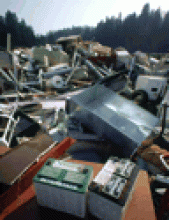- © 2006 CMA Media Inc. or its licensors
Capital Health provides care for 2 million Albertans across 9800 km2. Many critically ill patients require transfer to Edmonton. Long distances, climatic factors and resource pressures complicate how we stabilize and transport patients and then triage them at the receiving hospital. A major communication aid is the critical care line, a 24-h service with teleconference capabilities and contact numbers for both transferring and receiving staff.
Given the importance of optimal communication, we have incorporated simulated calls from the critical care line into the education of trainees in critical care medicine. Senior trainees are paged during a normal workday by the line. A facilitator assumes the role of a physician in a distant town. Relevant staff members are notified of this exercise and asked to act as they normally would. For example, emergency physicians and internists are notified that they may be brought into the call if the trainee decides, for instance, to bring the patient through the emergency department for further workup or if no bed is currently available in the intensive care unit. All calls are recorded to aid debriefing.
These simulated calls allow us to ascertain how well trainees obtain focused histories, offer practical advice appropriate to the skill set of the referring physician and deal with complex ethical issues (e.g., deciding what to do if a family wants to override a patient's wishes about medical intervention or deciding how aggressively to treat a terminally ill patient with whom no discussions have occurred about end-of-life care). We can test not only factual knowledge but also how that knowledge is applied in practice.
The Royal College of Physicians and Surgeons of Canada has decreed that physicians must be not just medical experts but also communicators, collaborators and managers.1 Our novel, simple and cost-free addition to training helps to address these laudable goals. The technique has been very well received, and we hope others may consider using it.
REFERENCE
- 1.↵











